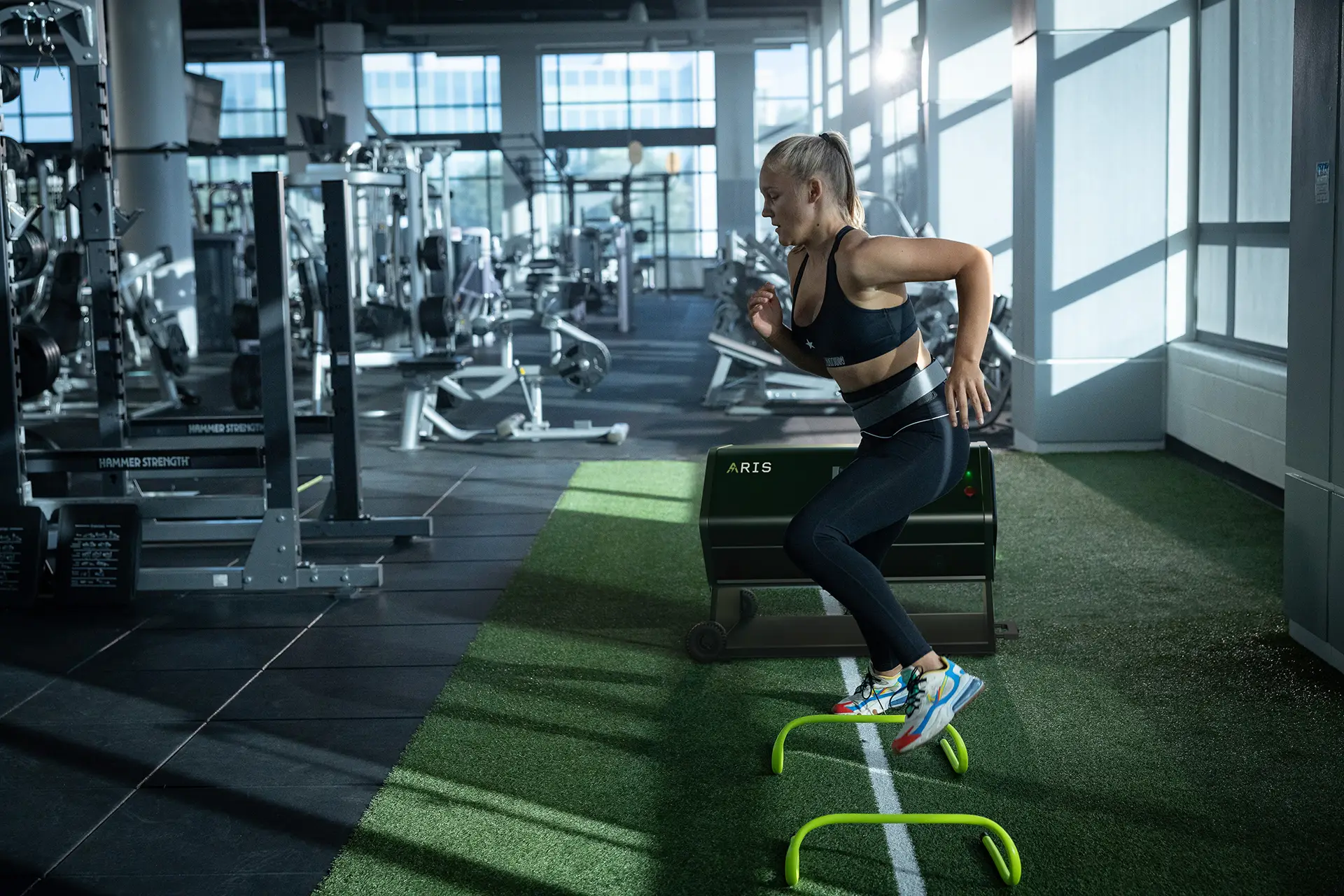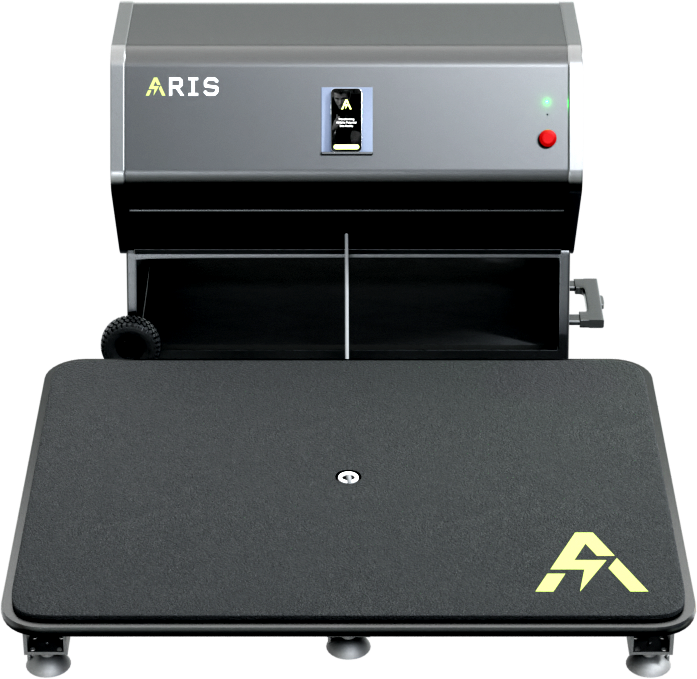What is Velocity-Based Training? (VBT)
Velocity-based training (VBT) is an approach to strength and conditioning that leverages real-time data on movement speed to optimize training outcomes. As an evolution of traditional resistance training, ArisPro utilizes VBT and digital resistance to measure the speed at which an individual sprints, jumps, or executes other specific movements with a load. This dynamic methodology allows for personalized and adaptive workout routines tailored to an individual’s unique capabilities and goals.
By adjusting resistance based on the velocity of each repetition, VBT aims to maximize power, enhance muscle activation, and promote more efficient and targeted muscle growth. As technology continues to play a pivotal role in fitness innovation, velocity-based resistance training emerges as a sophisticated and effective strategy revolutionizing the way we approach strength development.
The Roots of VBT: Based on Science

VBT is rooted in the principles of the force-velocity curve, a fundamental concept in resistance training, utilizing the inverse relationship between force and velocity during muscular contractions. As the velocity of a movement increases, the force a muscle can produce decreases, and vice versa. This curve highlights the continuum of strength and power development, with slower movements emphasizing maximal force production, and faster movements focusing on power output. By dynamically adjusting resistance based on the speed of each repetition and training session, VBT aligns with the force-velocity continuum, optimizing training adaptations for both strength and power. This approach allows individuals to tailor their workouts to specific points on the force-velocity curve, enabling a more nuanced and targeted approach to resistance training that aligns with individual capabilities and training goals.
VBT and Sprinting

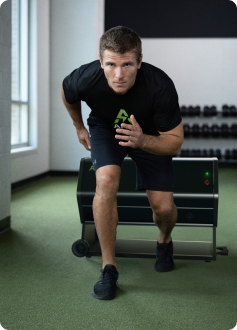
Beyond traditional resistance training, these concepts can have a tremendous impact on sprint performance. Applying velocity-based training to sprinting involves tailoring workouts to enhance both strength and power along the force-velocity continuum. By incorporating exercises that focus on explosive movements, such as plyometrics and resisted sprints in particular, athletes can optimize their ability to generate force quickly- a crucial trait for sprinting acceleration and top-end speed. Velocity-based training enables a personalized approach, allowing sprinters to target specific points on the force-velocity curve, ultimately translating into improved sprint performance and greater efficiency in stride mechanics.
Getting Started with VBT and Sprinting
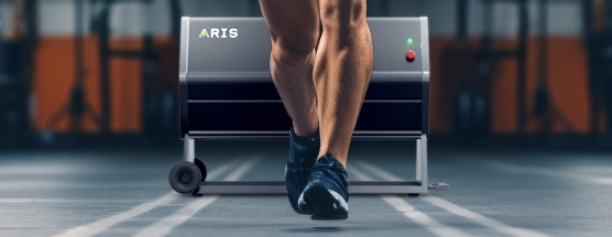
Imagine telling a group of athletes to do 4 sets of front squats, and each athlete must use 100kg/220lbs of resistance for each set. A few athletes may not be able to perform 1 rep, a few more may struggle to achieve 5 reps, and still yet several athletes may easily perform sets of 10 at high velocities. Prescribing a load in the weight room without understanding the capability of the athlete is of course suboptimal- if not negligent- of a coach. As it turns out, this example also applies to VBT and resisted sprinting with ArisPro. How should coaches begin using VBT and resisted sprinting?
Athlete Sprint Profiling

There are several items coaches should establish when adding in VBT with resisted sprinting. Athlete Profiling is an invaluable, indispensable process to help achieve optimal performance outcomes (Balsalobre-Fernández and Torres-Ronda). For beginning resistance training with linear sprinting in particular, consider (Morin):
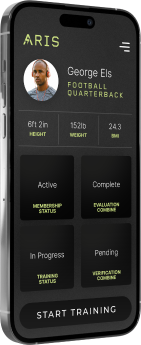
- Athlete weight (kg or lbs)
- Sprint or activity distance (m or yds)
- Maximum velocity (m/s or mph)
- ArisPro digital resistance (kg or lbs)
First establish the baseline value for athlete weight. This can be found the in the athlete profile on the ArisApp. This will factor into future calculations for the parameters for the ArisPro resistance used. Initial baselines are important to help determine the best application of resistances given the needs of the athlete (Lahti et al.)
Next, clearly define the distances you will be testing with the athlete. Having the ability to also define splits is an incredible asset as well (i.e. 5m, 10m, 15m, 20m, and so on).
After thoroughly warming the athlete up, have them progress to performing a series of 1-3 maximum-effort sprints through the prescribed distance with full recovery in between repetitions. Record the maximum velocity achieved for the desired distances or splits.
Now for the given distance intervals (i.e. 5m, 10m, 15m, etc.), you have a baseline reference for maximum velocity when doing repetitions at those distances in your training in the coming weeks. This baseline is important because it serves 2 purposes: objective reinforcement of achievement at maximal effort (something to aim for!), and secondly it helps establish a useful benchmark for velocity decrement cutoffs when determining fatigue or performance progressions.
Speed Programming and Choosing Resistance
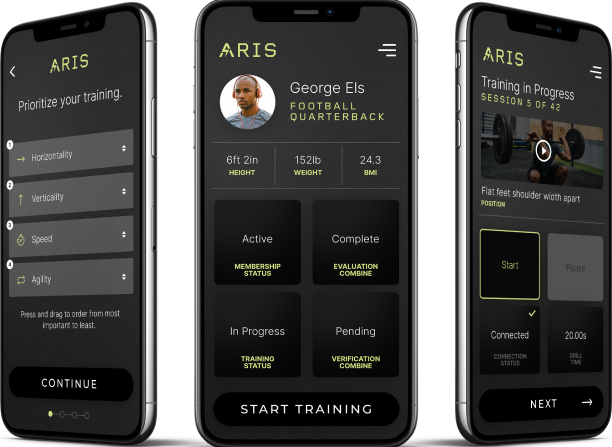
When first programming VBT with resisted sprinting remember that free, unloaded sprinting is the optimal reference for performance. Even when using resisted sprinting in a training session, include free sprinting as either part of the warm-up or blended into training sets depending on the needs of the program.
Give consideration to the age, physical maturity, and training history of the athlete when programming VBT and resisted sprinting, as supplementary work done with traditional resistance training using free weights may serve as a large training stimulus for more novice athletes.

In general, it’s important to understand how different levels of resistance applied during sprinting target different performance traits. While the guidelines below are helpful, it should be emphasized that the loads required to produce the velocity decrements that focus on the specialized training characteristics (mechanics, speed-strength, power, strength-speed, etc.) will be highly individualized based on the age, physical maturity, and training history of the athlete (Cahill et al.). When applied to maximal effort sprinting:

– Relatively light resistance of ~10% of an athlete’s bodyweight may produce a velocity decrement of 10% of an athlete’s maximum velocity. When those output parameters are maintained they can serve as excellent reinforcement for mechanics and technical proficiency.
– Small loads of 10-40% of an athlete’s bodyweight may produce a velocity decrement of up to 40% of the athlete’s maximum velocity and would target speed-strength traits, which showcase an athlete’s ability to move quickly under the maximum load possible.
– Moderate or intermediate loading of ~40-90% of an athlete’s bodyweight may incur a velocity decrement of 40 to 60% of the athlete’s maximum velocity. Utilizing this zone of training intensity may help focus on power development.
VBT and Change of Direction (COD) Movements

Can you use added resistance and VBT timing concepts with movements other than linear sprinting with ArisPro? Absolutely! While research may not be as abundant in chiseling out training zones for performance traits in the exact same way as linear resisted sprinting, the concept of tracking athlete mass (kg or lbs), the specific type of activity and direction (i.e. lateral shuffle and lateral shuffle to sprinting to the left or right, etc.), the distance of the activity (m or yds), the velocity metric of choice (m/s, mph, etc), as well as the additional external resistance (kg or lbs) offers the same framework for testing, re-testing, and monitoring short term and long term performance.
Standardization of each task or activity with COD movement is key to successful baseline testing and subsequent resisted training. Give consideration to each item:

- Activity type (lateral shuffle, lateral shuffle to sprint, etc)
- Activity distance (m or yds)
- Starting position (left or right facing, orientation to specific start point, etc)
- Desired technique (crossing over, drop step, length of shuffle and/or sprint, etc)
While traits such as speed-strength, power, and strength-speed may not have an exact ‘apples to apples’ application at various velocities as with linear sprinting, the concept of using velocity decrements in context to baseline profiling in various movements can guide coaches to progress or attenuate training load parameters as needed.
Give extra consideration to progressing athletes into COD or lateral movements while adding resistance. Allowing athletes the ability to adapt to these movements without resistance during profiling periods, and then easing their progressing under resistance at lower velocities may help support better tissue tolerance for ramping up external resistance and movement at higher velocities.
What to Know with VBT
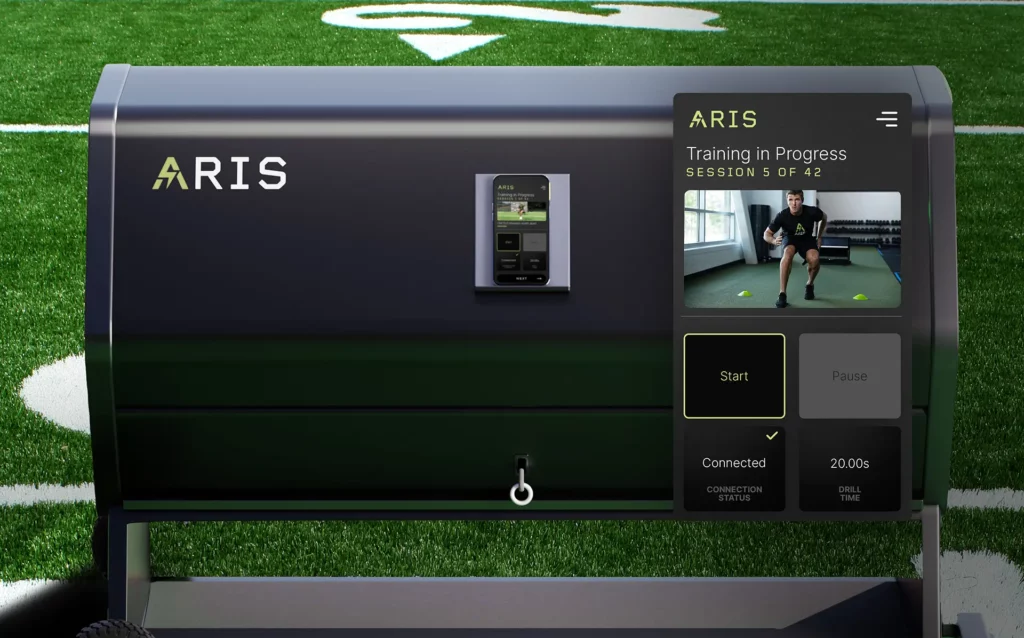
It’s important to note that each athlete will respond differently to ArisPro’s digital resistance level based on their abilities, and that profiling both unloaded as well as incrementally loaded sprints helps determine true performance cut-offs for the athlete to train the aforementioned traits. Depending on the zone of your training goals, monitoring the decrements in velocity will be an objective reinforcement of the specificity of the training, as well as important context to assess acute or prolonged fatigue, poor reaction time, poor readiness to train, or long-term maladaptation to training (Cross et al.).
To put it simply- it pays off to carefully measure what your athlete can actually achieve at various loads over various distances. Baseline testing, retesting, and monitoring are all easily accomplished every rep of every set of each workout with ArisPro.
Footnotes
Balsalobre-Fernández C, Torres-Ronda L. (2021). The Implementation of Velocity-Based Training Paradigm for Team Sports: Framework, Technologies, Practical Recommendations and Challenges. Sports (Basel), 9(4), 47. Link
Cahill MJ, Oliver JL, Cronin JB, Clark KP, Cross MR, Lloyd RS. Sled-Pull Load-Velocity Profiling and Implications for Sprint Training Prescription in Young Male Athletes. Sports (Basel). 2019 May 20;7(5):119.
Cross, M.R, Tinwala F., Lenetsky, S., Brown, S.R., Brughelli, M.,
Morin, J.B., and Samozino, P. (2019). Assessing Horizontal Force Production in Resisted Sprinting: Computation and Practical Interpretation. Journal of Sports Science, 10(4), 123-145. Link
Lahti J, Huuhka T, Romero V, Bezodis I, Morin J, Häkkinen K. 2020. Changes in sprint performance and sagittal plane kinematics after heavy resisted sprint training in professional soccer players. PeerJ 8:e10507 Link
Morin, J. (2022, August 3). Sprint Velocity-Based Training: It All Starts with Individual Load-Velocity Profiling. jbmorin.net. Link

